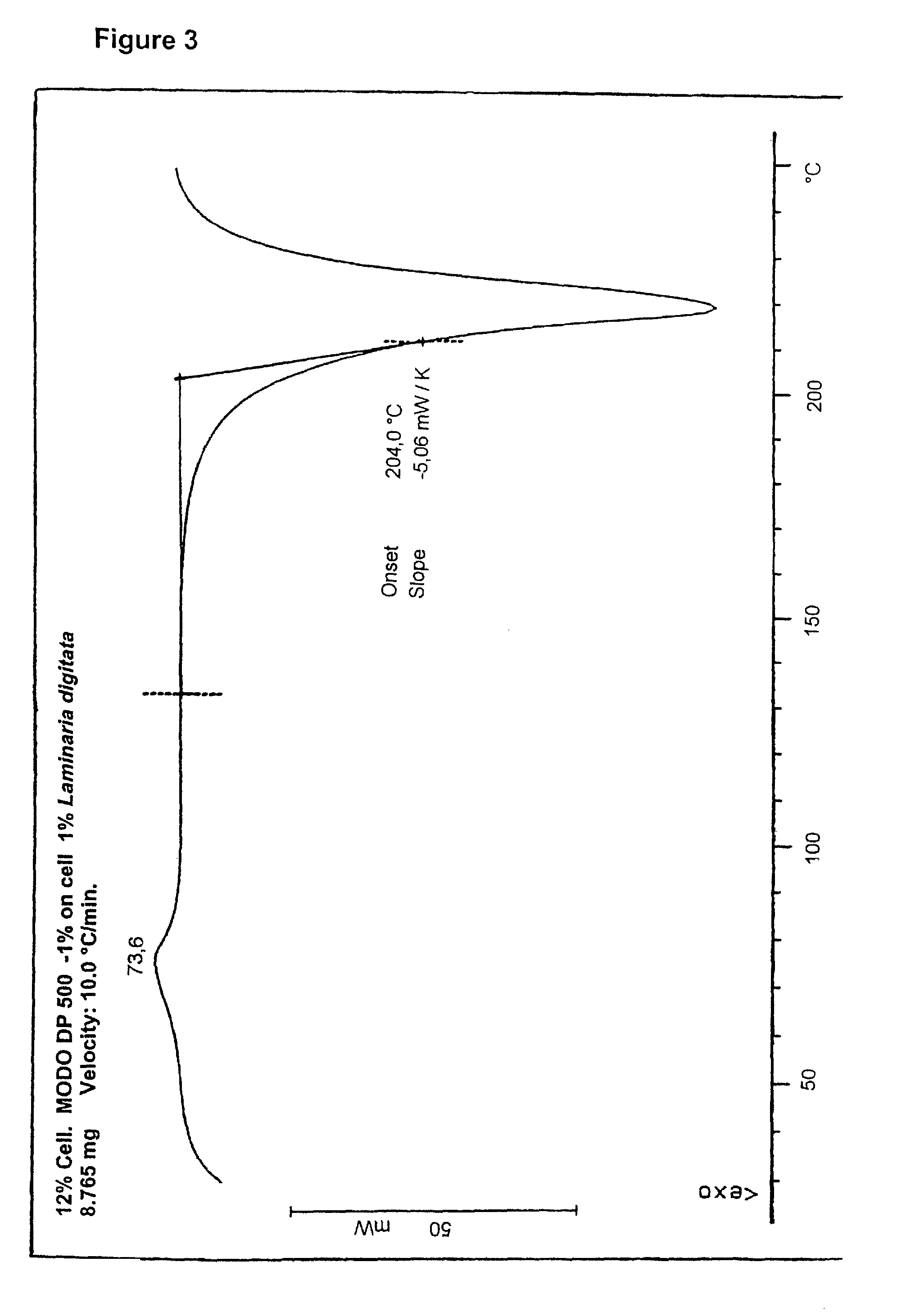Polymer composition and molded articles produced therefrom
a technology of polymer composition and molded articles, which is applied in the field of polymer composition, can solve the problems of explosion-like disintegration reactions of the solution, the disintegration temperature of the solution, and the difficulty in preserving the properties of the fibers
- Summary
- Abstract
- Description
- Claims
- Application Information
AI Technical Summary
Benefits of technology
Problems solved by technology
Method used
Image
Examples
example 1
[0113]3,156 g NMMNO (61.4%), 315 g MoDo, DP 500, dry contents 94%, 1.9 g propylgallate (0.63% related to the cellulose content) as well as 11.6 g of a powder—shown in table 1—(in total 3.9% related to the cellulose content) were mixed and heated to 94° C. Obtained was a spinning solution having a solids content of 12.4% and a viscosity of 6,424 Pa·s. The so produced spinning solution was spun to fibers like in comparative example 1,
[0114]
TABLE 5Fiber data example 1Example 1Fineness - Titer[dtex]1.40Breaking tenacity dry[cN / tex]38.60Breaking tenacity wet[cN / tex]30.70Breaking tenacity loop[cN / tex]11.40Breaking elongation - dry[%]12.40Breaking elongation - wet[%]13.00Wet modulus[cN / tex]199.00
example 2
[0115]Analogously to example 1,2.951 g NMMNO (60.84%), 305 g MoDo, DP 500, dry contents 94%, 1.8 g propylgallate (0.63% related to the cellulose content) as well as 17.5 g of the mixture used in table 1—(in total 6.1% related to the cellulose content) were mixed and heated to 94° C. Obtained was a spinning solution having a solids content of 12.9% and a viscosity of 7.801 Pa·s. The so produced spinning solution was spun to fibers like in comparative example 1.
[0116]
TABLE 6Fiber data example 2Example 2Fineness - Titer[dtex]1.48Breaking tenacity dry[cN / tex]36.60Breaking tenacity wet[cN / tex]32.40Breaking tenacity loop[cN / tex]13.30Breaking elongation - dry[%]12.10Breaking elongation - wet[%]13.50Wet modulus[cN / tex]188.00
example 3
[0117]Analogously to example 1,2,750 g NMMNO (60.3%), 305 g MoDo, DP 500, dry contents 94%, 1.7 g propylgallate (0.63% related to the cellulose content) as well as 11.2 g of a powder—shown in table 2.2—(in total 4.1% related to the cellulose content) were mixed and heated to 94° C. Obtained was a spinning solution having a solids content of 13% and a viscosity of 6.352 Pa·s. The so produced spinning solution was spun to fibers like in comparative example 1.
[0118]
TABLE 7Fiber data example 3Example 3Fineness - Titer[dtex]1.41Breaking tenacity dry[cN / tex]33.40Breaking tenacity wet[cN / tex]29.20Breaking tenacity loop[cN / tex]9.00Breaking elongation - dry[%]12.60Breaking elongation - wet[%]8.60Wet modulus[cN / tex]182.00
PUM
| Property | Measurement | Unit |
|---|---|---|
| particle size | aaaaa | aaaaa |
| particle size | aaaaa | aaaaa |
| particle size | aaaaa | aaaaa |
Abstract
Description
Claims
Application Information
 Login to View More
Login to View More - R&D
- Intellectual Property
- Life Sciences
- Materials
- Tech Scout
- Unparalleled Data Quality
- Higher Quality Content
- 60% Fewer Hallucinations
Browse by: Latest US Patents, China's latest patents, Technical Efficacy Thesaurus, Application Domain, Technology Topic, Popular Technical Reports.
© 2025 PatSnap. All rights reserved.Legal|Privacy policy|Modern Slavery Act Transparency Statement|Sitemap|About US| Contact US: help@patsnap.com



